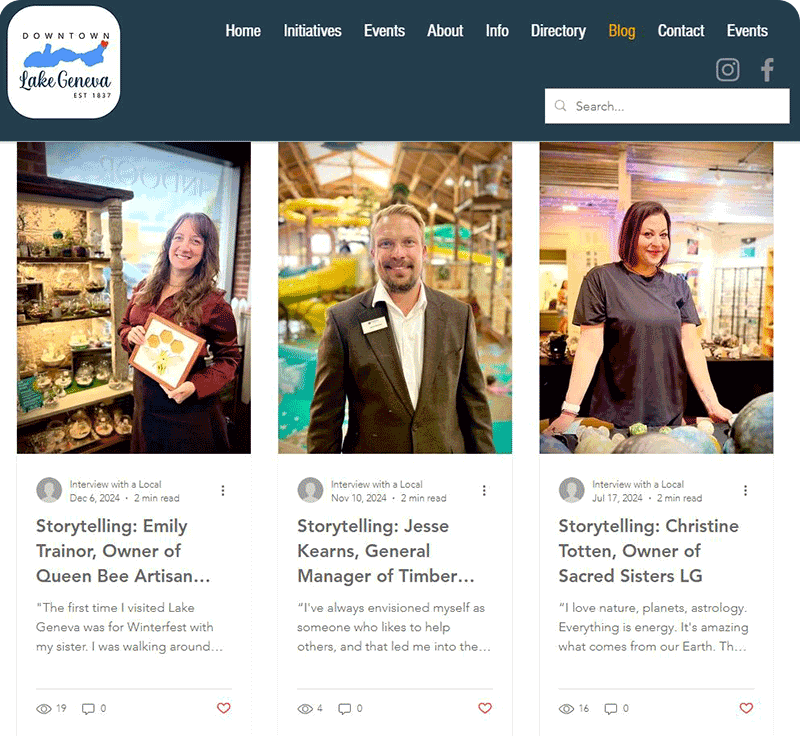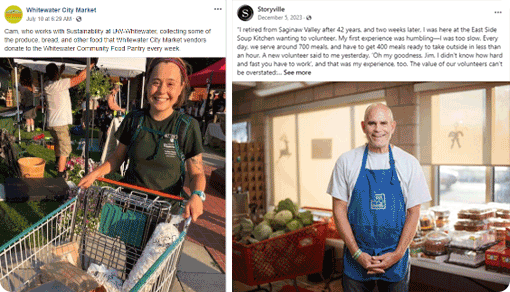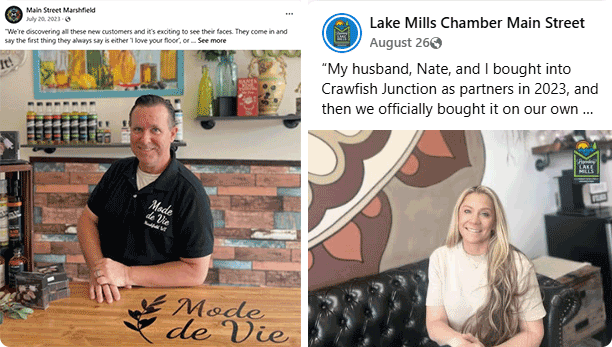
In the world of downtown revitalization and community development, data and dollars matter—but stories are what stick.
Storytelling is more than a marketing tool; it’s a strategic asset for community developers. Whether you’re trying to shift negative perceptions, engage potential sponsors, or inspire would-be entrepreneurs, stories help you connect with your audience on a human level. They reinforce your brand, convey key messages, and inspire action.
Why stories matter
People—especially politicians, funders, and community stakeholders— want to understand your district on a personal level. They want to hear how entrepreneurs, small business owners, and community champions build trust and emotional connection. Telling these stories directly shapes perceptions, challenges stereotypes, and highlights the diversity and vibrancy of the downtown area. Not only does storytelling allow your message to connect on a deeper level, but also, stories and images of individuals making a difference also maximize social media engagement, thereby boosting the audience for your message.

The best way to change perceptions is to tell stories that provide new context and information. While the feature story from Volume One highlights the significant role of women entrepreneurs in the community, the giant check photo accompanies a story announcing new funding for entrepreneurial programs.
Strategic storytelling goals
Effective storytelling should be intentional. Ask yourself: What message am I trying to convey? Who needs to hear it? What action do I want them to take? It is likely that you, as an organization, will have multiple messages and audiences that you want to reach.
Some common storytelling goals include:
- Overriding negative perceptions of your downtown or business climate
- Highlighting small wins and showcasing local owners and the impact of local businesses on the community
- Recognizing partners and building trust through connection
- Showcasing success, from startups to legacy businesses, makers, doers, and shapers

These posts illustrate the variety of stories and messages that can work to shape narratives and create connection between readers and your district or mission.
Crafting compelling narratives
To launch a storytelling series, identify and collect diverse stories that highlight your message. It’s okay to start out by interviewing people you know well, and who trust you, to practice your technique. But be sure that any resulting posts or materials include the breadth of messages and stories represented in your community.
Think of your collection of stories as your Instagram grid: Does the range of images shown effectively represent the community? It’s also a good idea to include some testimonial-type prompts in future survey tools, which can provide leads on individuals who have unique perspectives to share.
Meet people on their terms, listen deeply, and focus on their journey—not your organization. Ask open-ended questions. Your subjects might be more comfortable talking about the nuts and bolts of their businesses (it’s their baby); but the human-interest stories are the ones that best allow the community to feel a connection.
Consider the following interview questions:
- “What was the biggest challenge you overcame?”
- “What do you love most about downtown?”
- “How has your business story been influenced by your location?”
It’s helpful to use an AI note-taking tool during the interview. Not only does it allow you to have a more natural conversation without having to also take notes, but also, it can help you become a better interviewer. The AI tool will reveal if you’re dominating the conversation and help determine which questions result in the best responses.
In addition to capturing stories, take a compelling, high-resolution image of your interviewees. People are naturally attracted to faces and are more likely to stop scrolling or flipping pages when they see a face. Your interview subjects should be the focus of your images, and the details in the background should reinforce their story and show them in their natural environment.
Don’t forget to always ask permission before publishing direct quotes or images.

These images catch the eye and effectively convey something about the interview subject. The intro quote is enticing, encouraging the reader to click to learn more about the individuals featured.
Delivering your message
Once you have a collection of stories that reflects your community, your organization, and your impact, start sorting them by message and then by audience. Your audience is everywhere, so your stories should be, too.
Marketing research says that messages need to be heard seven times to be remembered, so sharing the same message in different ways on different platforms, such as these, is key:
- Blogs and newsletters
- Social media
- Speeches and stakeholder meetings
- Local media outlets
- Casual conversations at events or in elevators
Include messages tailored to both published or written platforms, as well as easy-to-remember verbal messages. Identify a few brief stories to share during speeches, in media interviews, and in other similar situations with staff and board members to personalize remarks and reinforce your key messages.
When structuring key messages, be concise, compelling, and jargon-free. Make sure to balance what you want your audience to know with what they want to know. Incorporate both stories and facts that support your message—which can vary depending on the audience, while the message remains the same.
As you become more comfortable with storytelling, your stories and subjects will evolve. Additionally, potential interviewees who are familiar with your stories and the positive responses they have received will be more open to being featured, creating a bigger pool of positive testimonials for your organization.
For additional inspiration, follow social media accounts well-known for effective storytelling, like Humans of New York , Love Wisconsin Project , and Storyville Cities .
